- Adding valuable sighting information to historical vagrants/rarities
- Splitting larger generic checklists into smaller location specific checklists
- Removing possibly bad data or in particular mis-identifications
I talked to several people who mentioned their #1 reason for using eBird was to keep track of their sightings for themselves above all else. The data after all was being provided free of charge by the birders/observers, and that in itself was valuable despite the quality of the data. It would be a lie if I didn't say that was also WHY I initially started using eBird back in 2004. It was an easy way to track my own sightings, I was after all filling up several notebooks a year with lists and this was an easier way to keep those lists, and manage them. For this reason I was quite cavalier with my locations. I often did counts for entire days for a county, or along 100 mile section of road. My lists were less for science than my personal needs.
There are in fact a lot of eBird users who ONLY use eBird for this very reason, and that's perfectly acceptable--it's a great tool for that--but it's also so much more.
Now I also talked to one person who mentioned that sometimes they just put in a list for a whole weekend because they wanted to keep track of the birds they'd seen, but they'd visited 10 places, seen 150 birds, and didn't want to take the time to go enter individual checklists for every place they went. That's another one I could relate to--I've done exactly the same. Creating and submitting checklists can be time consuming, and for some they just don't have the time to get granular. Some data is better than no data after all.
Cape May Warbler from Lytle Ranch... Less than 5 ever reported in Utah.
And yet one other person who kept very detailed lists of species seen never added details, photos, or any information to their lists. In their opinion they were already providing high quality data, and felt that the need to add more details was benign. In the long run there will be so much data that these details won't matter--the pictures, notes, etc. And again, I have done the same, I get it, and in some cases I whole-heartedly agree. I have heard the argument that in 150 years someone might be looking back at some data and see a report of a Cape May Warbler in Utah with no associated data. The report was validated but without any supporting data because I was experienced with that species. But how would those people know who I am? Honestly, I hope I leave some type of impact on birding in Utah in my life time, whether small or big--I would hope with a little digging someone can figure out who I was--especially in this digital age. But I digress, I also see the flip side, and that's where this whole blog post got started. Let's talk about those bullet points.
Adding valuable sighting information to historical vagrants/rarities.
Over the years I have slowly become more and more methodical with my checklists. This means being more granular with locations, and more detailed with subspecies, and adding specific details about flagged sightings. This is a personal choice, to try and make my checklists not only more valuable to researches, and those using the data for scientific purposes; but also, for other birders to be able to glean them for data, and for me personally to be able to look back and see details about a sighting all in one place. As of the writing of this I have submitted 3226 eBird checklists for Utah. As that number grows it becomes harder and harder to look at specific checklists with flagged sightings and remember all the details. So thus started the drawn out process of going back and adding those details.
Utah's 1st documented Bay-breasted Warbler
I started with my taxonomic life list for Utah and started working my way down. I specifically wanted to concentrate on adding details to species with less than 25 reports ever for Utah--with more details being added to the rarest species--those typically with less than 5 reports ever.
Utah's 1st Yellow-bellied Flycatcher
In cases where I had photos, videos, or recordings I embedded those in. Photos linked to my website, videos from Youtube, and recordings from Xeno-canto if available. If I felt the photos were sufficient for the report I often kept the notes short. On some species I added a small blurb, and on others complete paragraphs of texts that I cut out of emails I pulled from the original reports, or from Records Committee Reports from some of my oldest sightings. I didn't remember all the details from many of these reports so going back and searching in UBIRD, and other listserv archives for my original posts was really helpful. It also saved me from writing in details that might not be as accurate otherwise.
Utah's 1st Pine Warbler
I soon realized I had hundreds of such checklists, so it was somewhat tedious--but the end results were lots of photos added into the data pool, and some detailed (and not so detailed) write-ups of species that otherwise were originally note-less. In all so far I've added details for 36 species, on 52 checklists. Some of the more notable were details for eBird Utah's first Western Gull, Pine Warbler, Eastern Meadowlark, Sharp-tailed Sandpiper, Cape May Warbler, Yellow-bellied Flycatcher, Gilded Flicker, Bay-breasted Warbler, Black-billed Cuckoo, and Little Gull.. Despite the time that went into it, it was fairly easy to do, and well worth it.
Splitting larger generic checklists into smaller location specific checklists
I recently flipped through a field notebook from one of my summers working in Wyoming during college. I had 1 or 2 checklists for most days. One list was the survey I ran that morning, and the other was the rest of the birding that day. In some cases I drove over 100 miles on these days and went through every typical habitat type found in western Wyoming. In eBird these lists would look ridiculous--but none-the-less I have a few. Luckily most of my college years checklists from Wyoming are not in eBird yet. But I have dozens form the early years of eBird that I did enter like this. Some are an entire day count for 16 hours at a lake in the Uinta's. The checklist covers shrubsteppe, aspen, conifer, and mountain reservoir habitats though. I probably traveled 10 miles during the day and the list could be broken down more. These are hard though, because some of the birds cross habitats, and I don't remember what was in which necessarily. For these it's really best to just leave as is--its 1 checklist out of 1,000's, in the bigger picture that data is "close enough" that it won't look too out of place--and if it is the reviewer can invalidate the list.
Blue Grosbeak from 12,000' in the Uintas??? I think not.
But what about a 40 mile drive from Vernal to Hacking Lake in the Uinta's? It looks odd when a checklist has both Blue Grosbeak and Pine Grosbeak together. Or Red Crossbill and Lesser Goldfinch. Or Dark-eyed Junco and Marsh Wren (in August). During the early years I did this often--one checklist for the entire length of a road. The best recommendation is going through and removing the species that don't fit the greater picture, and breaking them out into a separate list at a better location for them. Or break it down in to as many lists as you feel comfortable doing. In this case I broke 1 list into 5. Vernal, the lower section of Sagebrush, Aspen Forests, Conifer Forests, and finally Hacking Lake. It's still not perfect, but it fixes one bad list.
Pine Grosbeak should never be on the same list as Blue Grosbeak in Utah...
One of the most common offenders of this is the "Antelope Island State Park" checklist submission. There are numerous hot spot points for the park, but many folks do one list for 5 or 6 visited spots. This means you have Snowy Plovers and Godwits on the island. Others mistake the causeway spot for the whole park and then you end up with Warblers, Tanagers, and Orioles on the causeway. I tend to do a list for the causeway and each major location I go to on the island. Sometimes I leave with 7 checklists--but its super granular and useful. This is one thing I have made a better effort at in recent years and try to be as specific as makes sense for the places I'm going. With apps like BirdLog it now makes it easier to avoid this, allowing you to quickly create a new list on the fly while in the field as you go from habitat to habitat, or location to location.
Removing possibly bad data or in particular mis-identifications
This is one of the hardest for most people to do--myself included. Going back and looking at lists and saying, that's not right, or I'm just not sure anymore, can be difficult for most birders. I went back and removed a number of my old Short-billed Dowitcher reports and changed them to Dowitcher sp. I did leave ones that had photo evidence, but ones without were mostly changed. I went back and took Least Bittern off an Ouray list I had form my younger years. At the time others were reporting them, and I thought I saw one. But looking back and having seen that species since it was a no brainer to remove it. In some cases if it doesn't seem right, its safer to just change it outright. Leave a note, change it to a spuh, with details about why you changed it. But if you aren't sure this is a good way to clean up old lists.
Dowitcher sp? Or one of each?
There are some that I probably should change, but I can't bring myself to do it. Sometimes you believe so much in a sighting you had, despite lack of evidence, experience, etc, you just stick with it. You very likely are correct with your belief, and in many cases the data has already been invalidated in eBird, so for your personal use what does it matter? It's all about finding the right balance for how you use eBird.
Whether your a hard-core eBirder, a casual user, or just someone who keeps basic lists via the awesome resource, there are things we can all do to make our lists more useful--for everyone. And I'm sure there will be more ways in the future, and things will change, and improve. eBird has come along way in the last 10 years, and so has the quality and amount of data.
How do you personally make your checklists more useful? Share below, and help others improve the data they're submitting!
Labels: checklist, commentary, eBird, listing, lists
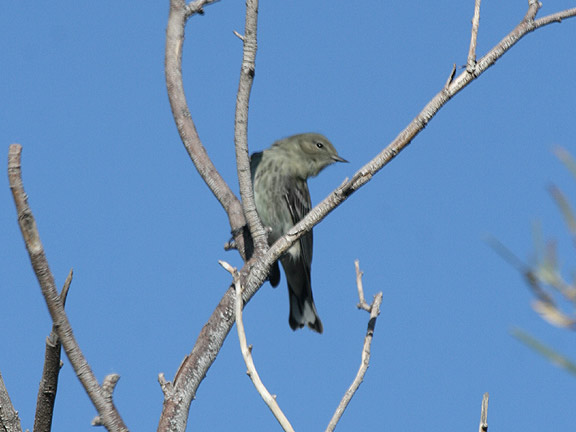
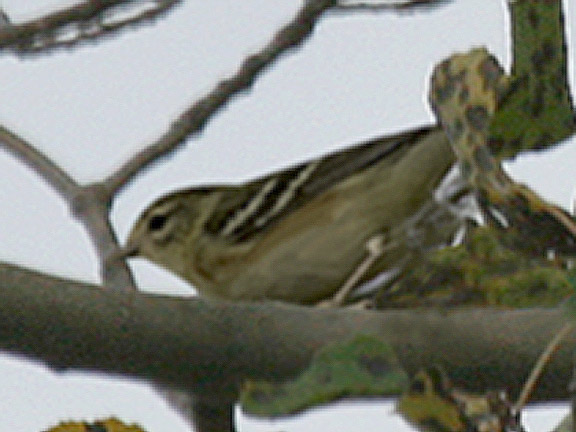
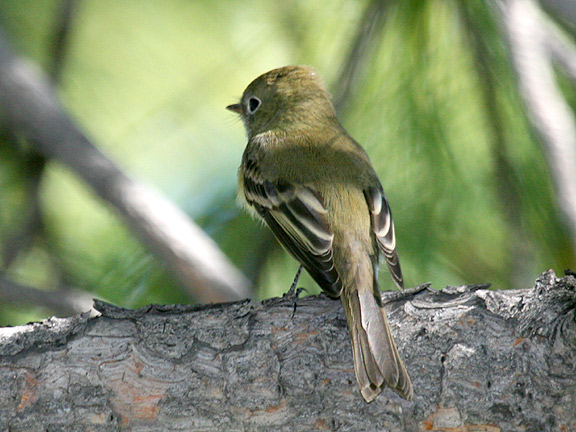
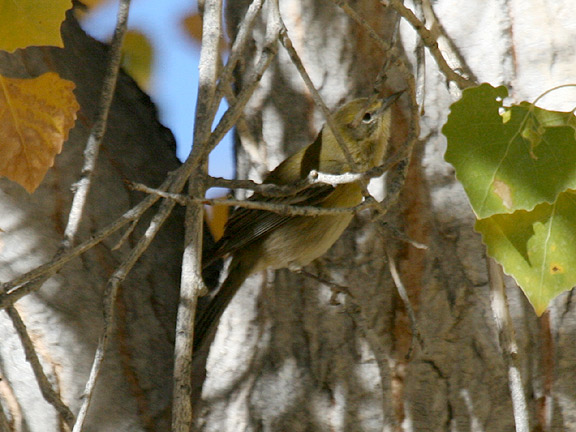
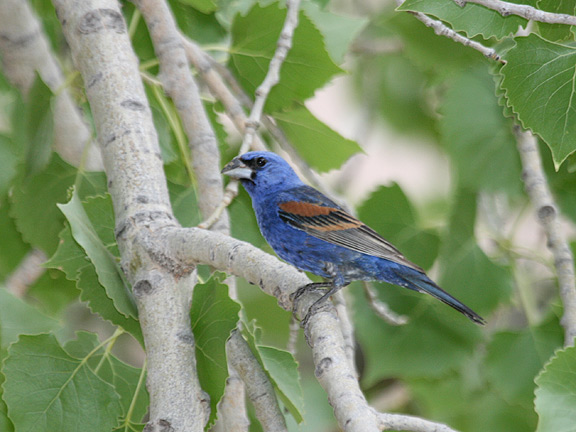
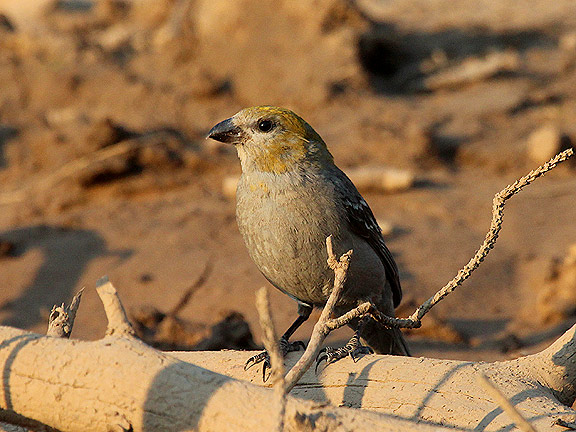
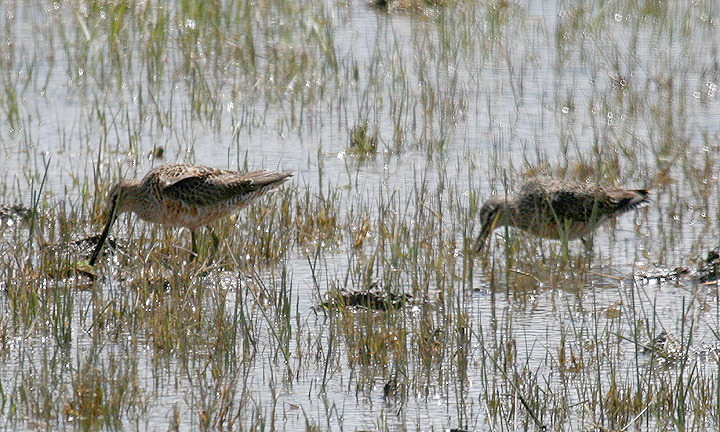

17 Comments:
I really don't care about adding details to my checklists because they're mine and it doesn't matter to me, I know what I saw. Since its a free program and there are no requirements to add details I wont do it. I also don't care about people in the future giving credence to my sightings because that won't matter to me either. I often make checklists for the whole day, because of how easy it is. I dont have the time to enter a bunch of lists. And I do enter just one list when I go to Antelope Island as well, like I said, my lists, I do them how I want to do them.
I can understand what you're saying. If your attitude is that your checklists are for your own purposes only, which is understandable, I would say that it would be a courtesy to change some of the preferences in your account if you haven't already. Opt to "Hide my data from eBird Alerts" and "Hide my data from Recent Visits" and even "Hide my data from the Top 100." That way if you're seeing some rarities but are unwilling to provide further data, it won't show up in everyone's eBird alert feeds. People do use eBird for different reasons, and eBird alerts can be a big reason for some people. If there's an alert for a rarity in their feed but with no information, maybe it shows up a couple days after the sighting, it would be hard for them to know if they should chase it or not.
"I really don't care about adding details to my checklists because they're mine and it doesn't matter to me, I know what I saw." I think that's a pretty selfish perspective. eBird isn't just software--it's a community. They're not just your checklists--you're contributing to citizen science. If your attitude is that your lists belong to you and you alone, you should probably just keep your lists in a notebook.
"I also don't care about people in the future giving credence to my sightings because that won't matter to me either." That's also a pretty selfish perspective. Birding is a sport. Birding is also science. eBird data helps biologists understand bird behavior which can then, in turn, help conservation efforts. Maybe your data won't matter to you in 150 years, but it could matter to birds. As eBird *contributors* (not just "users") we have an implicit responsibility to give as accurate information as possible in the name of science and conservation.
" I dont have the time to enter a bunch of lists." If you don't have 5 minutes to spare on creating a quality list, how do you find the time to go birding for any length of time?
I think it is fairly important to add details and photos when submitting checklists to ebird. I am subscribed to a few ebird alerts, not specifically to chase rare birds but also to see what is being reported and to learn patterns. I have found that it is very difficult to know if a sighting is legitimate if there are little to no details as is the case with a fair number of rare birds. Although you know your reputation and your birding skills not everyone else does. Even if you are well known birder in your area, someone who is visiting your state for the weekend may see a rare sighting with no details and decide not to give chase, even if the bird was just reported. All that being said, I generally can tell when a rare bird sighting is legitimate by who reports it and by the details provided, but occasionally I see a bird being reported by someone who I don't recognize who is driving through the state, on vacation, etc. and good details or photographic proof are not provided. This is frustrating to me not as a chaser but as birder because I want to know if this person really saw a northern waterthrush at farmington bay (hypothetical). I think a good philosophy to adopt in providing details on sightings is that a long description is only needed if a bird is exceptionally rare. It seems that most flagged birds are slightly early or late migrants, or "expected rarities". In this case a quick description of the bird (even one sentence) will suffice. Often when I report rare birds I attach a diagnostic photo with few details, this is just as good if not better to me than a long description of a sighting. I am curious to see others opinions on this post and the comments that will follow.
I agree with Anonymous #3. The purpose of eBird is not to maintain your personal lists, it is to contribute to the greater knowledge of avian abundance, distribution, phenology, etc. The listing feature is a fantastic benefit, but I believe it should be looked at as more of a reward for being an active citizen scientist. It seems that properly using eBird (i.e. putting in effort accurately, not just "list dumping" or checking "incidental"--unless it truly is, adding comments when necessary, etc.) is the least one can do in exchange. It's a lot cheaper than purchasing Birder's Diary or some other overpriced listing software.
I agree with anonymous #3, 4, and 5. If you are purposely neglecting to contribute to the scientific aspect of ebird then why are you using ebird? Details, locations, and times are all important to ebird and the ebird community. This takes very little extra time and benefits a large number of people, not just yourself.
One thing you didn't mention that can make your checklists more valuable is to avoid using an X to report the number of individuals of a species that you see. Even if you can't get (or aren't patient enough) to get an exact count, use an estimate.
Like I've said before, when birding out of state eBird is the resource I mainly use to locate target species of birds. I don't recognize the names of the birders reporting so, I rely on the quality of their report (photos, details, etc.) to decide if it is worth chasing. With most 'rare bird' reports, there are multiple sightings, and some form of media attached with the reports. With sightings of birds that are commonly seen in that particular area though, the details rapidly go away. When submitting my lists to eBird I try to remember that there is likely an out-of-state birder visiting the area that needs to add one or more of the species I saw to his/her life-list. A California Gnatcatcher is a fairly common species for those birders lucky enough to live in San Diego but, I just added it to my life-list on a recent trip to the area, and used eBird to find recent sightings of that species in the area.
With that being said, there is a benefit to ALL reports. I would rather know that certain birds were seen over a three day weekend somewhere on Antelope Island than not to know at all.
Hey Tim,
Great post on what we all can do to make our ebird checklists better not just for Cornell but for birders and birds themselves. I know I have been guilty of such things in the past and will try taking the extra time to improve my lists.
Unfortunately for views such as the first anonymous post, they don't realize that they are hurting the birds they are enjoying viewing in the first place. If you really care about the birds you are viewing and just don't care about the tick then you should enter the best data you can. Accuracy is essential for Cornell to get the information they need to help learn about and properly conserve birds everywhere through the data gathered on the site. If you truly care about the birds then you will enter the best info possible.
They also don't realize that they are hurting the birding community as well and community is an apt word for us birders since to me birding is at it's best when it's a social activity. Birds tend to flock together and birders do too. I get the most enjoyment from birding not doing it alone but when I am sharing birds and sightings together with fellow birders. I often get more joy getting others to see a rarity rather then finding it myself and I am sure I am not alone in this sentiment.
By not sharing accurate sightings you are hurting other birders. Who knows if the bird you saw could be a spark for someone else or could lead to other nice birds being found at a given location. I don't understand why other birders refuse to post rare and regular sightings in a timely fashion or refuse to post them at all. Documenting rarities with pictures and good ebird checklists also fall into this category since documentation helps birders know what is actually out there.
We should all strive to be a better part of the birding community since who can understand the highs and lows and adventures of birding best than other birders? I assume most of us out there gleam some birding information from ebird and the local list serves so why not do your part and give back to the resources you use to help you find the birds you want to see? It only takes a few extra minutes but think of the joy and smiles you can bring to other birders with the information you can provide.
Thanks in advance for making the birding community that much better.
Firstly... damn, we've got a lot folks named Anonymous around here.
Begin rant: (I wrote a lengthy response already, but it didn't publish. The last one was long winded and took an hour to write. I'm now out of time, so I'll paraphrase.)
THERE IS NOTHING WRONG WITH SELFISHLY USING EBIRD!!!
I do it all the time and will continue to do so. I wouldn't presume to tell others how to enjoy birds and keep their lists. Nor would I suggest that others stop using eBird or keep their crappy observations private. Screw that. Do it how you see fit. (As my own presumtuous admonition, I'd like all who own a copy of Kaufmann's advanced birding guide (2nd edition) to read page 17. I think it applies with telling other's how to eBird.) I'm not referring to the content of this great blog post, but rather the comments.
If you subscribe to needs/rare bird alerts, it's ultimately up to you to decide whether or not to chase. I've chased well documented birds and dipped. I've also chased questionable sightings with no additional information and easily found the bird.
eBird provides personal tools in exchange for our data and efforts. Although the best quality checklists are the most useful, eBird elicits and accepts ALL data. It's a good practice to submit quality checklists, but it's not a requirement. Are birders who don't use eBird selfish? Hardly. I don't justify my time spent birding in the name of science and conservation. I do however support both and so do ALL eBird submissions.
According to eBird's "Why Should I eBird?" page: http://help.ebird.org/customer/portal/articles/973902-why-should-i-ebird-
It begins with, "Every time that you see and identify a bird, you are holding a piece of a puzzle. Whether you are casually watching birds in your backyard, or chasing rare species across the country, you are helping to put this puzzle together. It might be a personal puzzle."
And ends with, "By keeping track of your bird observations and entering them into the eBird database, you’ll benefit, too. You can access your own bird records anytime you want, allowing you an easy way to look at your observations in new ways and to answer your personal questions about what birds you saw and when and where you saw them."
Like Anonymous already mentioned, birders use eBird for various reasons. If you want to submit an all X's count, go ahead. If you want to leave the comments empty, go ahead. If you don't feel like snapping a crappy photo, don't. If you don't feel like sharing an amazing photo, don't. Thank you for your submission, here's your personal data.
I recently spoke with a friend about concerns over some of my own and other's odd/unsubstantiated sightings, and a 'sorry for sending you on a goose chase'.
His reply was simple:
"Keep reporting."
I will. Today I submitted my 2,500th eBird checklist (in 3.5 years of eBirding). That adds up to alot data. Some lists were excellent with well written descriptions, embedded images/video. Some were half-assed, riddled with bad ID's and innaccurate counts. Most were average. All were fun. All were accepted by eBird. Birds are awesome.
End rant. Thanks eBird.
Shyloh
Anonymous #1. You're my hero. Thank you for your comments.
Let's put citizen science and quality of data aside for a moment and consider this. Birding, for many people, is just a hobby. They enjoy looking at birds and marveling in their presence. For others, it is a (sometimes pretty serious) SPORT with a (most of the time) friendly competitive spirit. As in any sport, there are rules. But with birding there isn't a rulebook, but a tacit code of conduct in the name of ethics and sportsmanship. One obvious rule in the sport of birding, is, if you see a rarity, don't purposefully chase it off so that others can't see it. I'm not saying that anyone is guilty of this, it's just an example of one of the tacit rules of birding. It runs on the basic premise that we all be decent and fair to each other in this sport. That we give each other a chance to see as many birds as possible. Another basic etiquette rule in today's world of the sport of birding is to report a rarity in a timely fashion, preferably the same day, when you see it, if you can. This may have not been important in years past when there was no eBird or listserv. But if you had close friends that were also birders, and you were a swell fella, you made a phone call to let them know you found a rarity. Word spread through friends about out-of-the-ordinary sightings and the lucky ones "in-the-know" got to see the bird. In today's world, we all are (hopefully) friends and instead of playing the telephone game, we have the tools to make an immediate rarity report. Most of us have smart phones (or a phone we can at least use to call someone with email access) and can report our notable sightings almost immediately through a listserv. It is in the spirit of friendly competition that we do this. When someone purposefully doesn't report a rarity to the listserv, or takes a couple days to report it to eBird (and then, at that with no description or photo to back it up) it is a slap in the face to other birders on many levels. It's like saying "you're not my friend" to everyone. But it's also like “I'm keeping this one to myself.” We don't purposefully scare away rarities in the name of fairness of the game. And we share our sightings in the name of fairness of the game.
Another rule of our sport is that out-of-the-ordinary sightings, in order to “count” in any formal sense, whether it's a rare bird submission or a big year, it must be “proven” in order to be accepted by the community. In the “olden days,” this maybe meant a photograph, but even a sketch or detailed description would suffice. If you wanted your record to “count” you would submit it to a records committee. If you wanted to keep your birding private, you weren't out to break any records or claim any glory, you would just keep a life list and a journal. You could just go ahead and put a rare warbler in your notebook because you knew you saw it. In today's world we still have records committees. But eBird is a new community in which records are submitted and reviewed. When you submit data to eBird, you're not just jotting it down in your personal notebook, you're submitting it for review by your peers. It's a “hey guys, look what I found” that goes out to everyone who subscribes to a year needs or rare birds alert. Without data to back it up, that submission, while it may remain in your personal data, is rejected in the sense that you lose your reputation with your peers, and will also be rejected by the eBird reviewer and not added to certain public data within eBird. Ebird is kind of a new form of a records committee. It is data submission and acceptance or rejection.
Continued...
continued...
Maybe you don't believe in the game. Maybe it's not a sport for you, but a hobby. Maybe it's something more pure--a calling, even. And eBird helps you keep track of that. And that's great. But, when you submit public records within eBird, you are, in a sense, saying “I'm playing the game.” You're throwing down. You're participating. When your settings allow your name to be in the top 100 in eBird, you're playing the game. When your sightings are sent out to everyone in the needs alerts---you're playing the game. And this is where the disconnect happens. We can talk all day long about the integrity of data, but, when it comes down to it, eBird is the scoreboard of that game for many people. Maybe we don't like to admit it, say that we're purists, that it's “all about enjoying birds.” But when it comes down to it, what eBird user hasn't snuck a peek at where their name was in the top 100? Or scrolled through needs alerts strategizing their next move. Or obsessed about their year count?
Maybe you couldn't give a flying fig about rules and games and counts--you just want to do your thing. Fine! You have every right to do so. Nobody HAS to do anything when birding. We can all still be friends. We all have different reasons for birding, motivations, methods, and philosophies. But if you do throw your hat in to the game (ie, submit public records through eBird) and don't play by the rules, do expect that people will be upset. That they'll be rubbed the wrong way. There will be ruffled feathers.
Yes ebird may 'accept' all checklists in that it will let you put in whatever you want but it doesn't mean the checklists or certain birds are validated (ie that middle school that enters crazy birds.
When you do enter in bad checklists with poor documentation then you are making the life of the state and county ebird moderators much harder. In Utah these moderators are volunteers who give up there time to help out with birds.
Every time someone submits a bad checklist or a rarity with poor documentation, they have to email the person to ask for more information and ultimately decide whether or not to validate the sightings. It's a waste of their time to do this repeatedly if people are knowingly submitting bad checklists.
Everyone should show some respect to the moderators in Utah and submit the best checklists they can. Try it get pictures if you can. Try to include good notes like this blog suggested. But realize that all data is not validated so make the data as good as possible.
Check out my response to these replies here:
MAKING YOUR EBIRD DATA MORE VALUABLE PART DEUX
In response to Anonymous's post of September 3, 2014 at 5:23 PM, it seems to me awfully cavalier about bad data. I agree that people should use eBird for their own personal purposes. I have many checklists where I did not input effort data and many more where I use "x" instead of counting. But I think it is quite wrong to enter bad data that you know to be bad. If you don't want to count birds, or don't think that you got a good count, just enter "x". You don't have to do any extra work, and then the data is accurate. But if you enter a number you know to be wrong, or inaccurate, you could be throwing off scientific analysis years down the line.
A lot of the discussion on this post has focused on rare birds. But much of the research conducted with eBird data will be about non-rarities. And bad data about non-rarities is much harder for reviewers to get rid of. If you submit a report of a code 5 rarity with no documentation, it will be easy for the reviewers to reject it because they will be able to tell that it is a highly unlikely sighting without any other knowledge on their part. But if you report 5 Rusty Blackbirds, when in reality you saw 5 birds that could have been Rusties or could have been Red-wings (in an area where both are common and expected), you are throwing off the record in a way that others have almost no ability to counteract. We all know that people make misidentifications (myself very much included), but submitting data that you know to be flawed really defeats a lot of the scientific and conservation value of the eBird database.
I think it is totally fine to submit vague or incomplete data. You don't have to submit more than you want to. But don't submit more than you can. Use the features of eBird to note the limitations of your data (using the "x" for species count, incidental checklists, whole counties or states as the location, sp. type listings) and then the good aspects of your data can be used, and others will know its weaknesses.
You enter your data, it costs you nothing, and in exchange you get your data digitized and downloadable for free, you get your lists and your Top 100 and target species and hotspots and bar charts and frequency plots. All for free.
Your data takes up space on the servers, which cost electricity and space, it also costs time and energy for researchers to filter and manipulate the data. They are the ones who pay for it all. Most of us understand this mutual benefit for the sake of bird population stewardship.
Thank you for your expressing your enthusiasm and positive reception of the latest eBird upgrades. I think it's important to maintain the balance of this mutual arrangement - to keep the current contributors and to encourage new ones, especially since eBird is now worlwide.
Utah Birders >>>>> Download Now
>>>>> Download Full
Utah Birders >>>>> Download LINK
>>>>> Download Now
Utah Birders >>>>> Download Full
>>>>> Download LINK Pf
Post a Comment
Subscribe to Post Comments [Atom]
<< Back to Previous